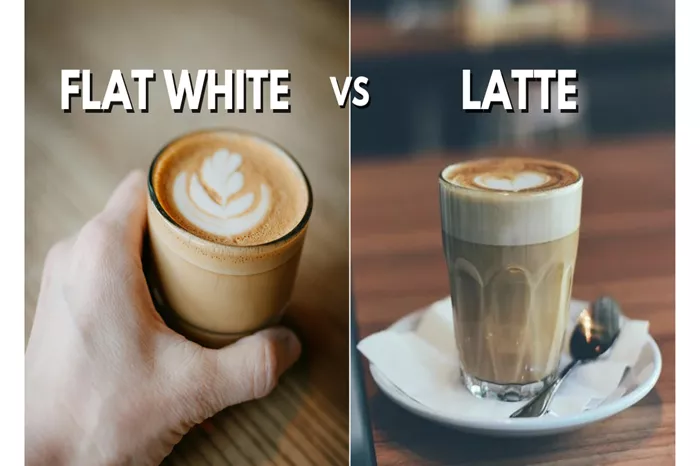Espresso-based drinks come in many variations, and two of the most popular are the flat white and the latte. While they may seem similar, these beverages have distinct characteristics in terms of preparation, milk texture, and flavor. Let’s break down the differences to help you better understand what sets them apart.
What is the Flat White and Latte?
A flat white is an espresso-based coffee drink originating from Australia and New Zealand. It features one or two shots of espresso, a small amount of steamed milk, and a thin layer of microfoam. The texture is smooth and velvety, offering a balanced flavor where the espresso shines through the milk.
A latte, short for caffè latte (Italian for “milk coffee”), is also espresso-based but contains a larger volume of steamed milk topped with a noticeable layer of foamed milk. The latte emphasizes a creamy, milky flavor, with the espresso taking a more subdued role.
Key Differences in Preparation
Milk Volume
Flat White: Contains substantially less milk compared to a latte, resulting in a more concentrated coffee flavor.
Latte: Has a significantly larger volume of milk, often double or more than that of a flat white. This creates a creamier, milder drink.
Milk Texture and Foam
Flat White: The milk is steamed to create microfoam, a velvety texture with tiny bubbles that are almost imperceptible. The foam layer is thin, blending seamlessly with the milk.
Latte: The milk is steamed to produce a denser foam layer on top, which is clearly visible. The texture is creamier but also lighter due to the airy foam.
Espresso Ratio
Flat White: The smaller amount of milk allows the espresso’s bold flavor to stand out more prominently.
Latte: The larger milk-to-espresso ratio significantly softens the espresso’s strength, making the flavor more subdued and milky.
Visual Differences
The appearance of these drinks also highlights their distinctions:
Flat White: Appears compact with little to no visible foam, showcasing a smooth and integrated surface.
Latte: Often served in larger cups, with a distinct foam layer visible on top, creating a more layered presentation.
Including a side-by-side image comparison would effectively showcase these visual differences.
Taste Differences
Flat White: Offers a balanced flavor profile, with the espresso remaining bold and prominent due to the smaller milk volume.
The microfoam enhances the texture without overpowering the espresso’s intensity, providing a harmonious blend.
Latte: Has a milder taste because of the substantial milk volume, which dilutes the espresso.
The foam layer adds a light, airy texture that complements the creaminess, making it a smooth and sweet option for those who prefer less intensity.
Regional Variations
The preparation of flat whites and lattes may vary depending on the location. In some regions, flat whites might include an additional shot of espresso, or lattes may be served with more foam than traditionally expected. Always check with your barista to understand how they prepare these drinks.
Conclusion
If you’re deciding between a flat white and a latte, it often comes down to personal taste preferences:
Choose a flat white if you enjoy a stronger espresso flavor with a creamy, velvety texture.
Opt for a latte if you prefer a creamier, milk-forward coffee with a lighter foam layer.
By understanding these differences, you can confidently choose the drink that best suits your preferences!
Related topics:
- Cappuccino Vs Americano: What is the Difference
- What Is the Difference Between Direct Trade and Fair Trade Coffee
- Cafe vs. Coffee Shop: What Is The Difference


